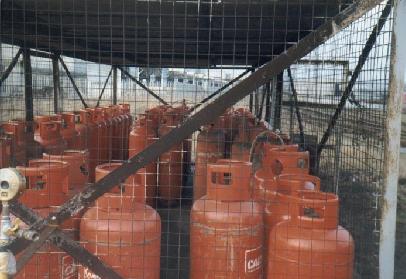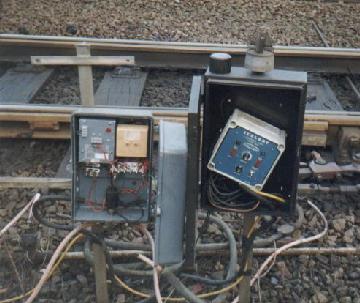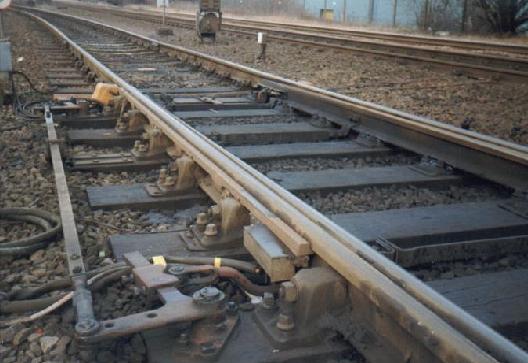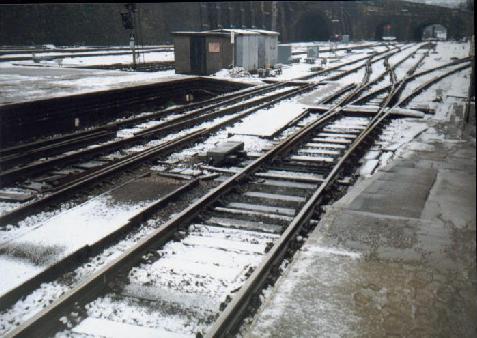This website has been archived from TrainWeb.org/railengineering to TrainWeb.US/railengineering.
|
Home
The Railway Organisation
Maintenance Planning
|
Gas Switch Heating
Whilst in the Sheffield region, I went to see a gas heating installation. This is an installation that Jarvis have recently taken over from Balfour Beatty. This was the first opportunity to see a gas switch heating installation and to see it operational. Gas installations are not common place nowadays, the more popular being electric strip heating. One reason is because gas switch heating uses Liquefied Propane Gas (LPG). It is stored in large gas tanks on the lineside, as seen below.

The gas is transported to the rail by pipes. The entire concept of gas switch heating is
quite dangerous. This is because LPG is much heavier than air, and if a leak occurs in the
pipe work, the gas will just lay on the ground. All that is needed is a spark, for an
explosion to occur. As a result of the greater risk involved, the maintainers have to have
the sites inspected by the gas suppliers Corgi, who, then give the contractors certification
to maintain the installations.
Gas heating is completely different to electrically operated heating. A control cubical still
exists but is about 10 times smaller than those that control electric strip heating. The same
operating parameters are in place, with the same operating temperature set points.

Attached to the side of the rail is a flash tube. LPG enters this chamber and is ignited
by what can be effectively described by as a spark plug. The combustion works its way down
the tube, heating up the entire length.

These flash tubes require more maintenance than electric heating. This is because the
'spark plug' is prone to failure or fouling. Also because within the flash tube are filters.
These sometimes become blocked with dirt and therefore require cleaning. You can tell when the
heating is on because you can hear the tiny ignitions going down the tube every couple of
seconds.
Upon being out with the maintenance gangs, several faults were found. 99% of failures of
electrical strip heating is due top cable cuts. That is, the cable supplying the 110V input
has been severed. The tamper typically does this. The ironic thing about this is that the
tamper is operated by Jarvis. There appears to be a war going on with the plant and electrical
and track teams.
The method of repairing such cable cuts is very easy. The wire is stripped, and two connectors
are used to join it. Next, either insulation tape or a shrink fit sleeve can be used. In the
first instance, tape is used to keep out moisture and is a very quick job. On the other hand a
shrink fit sleeve requires the use of a blowtorch. With applied heat, the sleeve shrinks until
it forms an airtight and waterproof seal.
Occasionally the supporting clips holding the heating strips in place come loose or fall off.
To rectify this, new clips are used for replacement. This involves using a large hammer and
basically knocking them on. Also, the temperature sensors are sometimes found to have come
away from the rail. These are again just knocked back on with a hammer.

|














